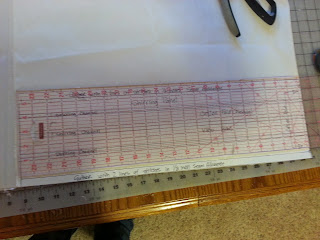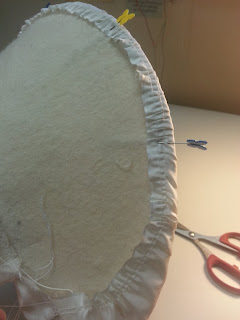Exterior Layer
The exterior layer is constructed the same as the interior layer of View B. The only exception being that you will have the shirring channel side visible.
Compare the difference between View B and View C:
The only difference is that View C's shirring is on the right side, and View B's is on the wrong side.
All the construction is the same. Applying to the buckram form is the same except that you will apply it to the exterior in View C and the Interior in View B.
I am including construction pictures.
This concludes the Tutorials for the "Dinah" Bonnet pattern. I hope that if you have any questions you will message me, or ask them here on the blog. I have faith that you will finish the bonnets and give me honest and thorough feedback. I'm counting on you guys! :) Thanks again for agreeing to participate in this project! :)
Compare the difference between View B and View C:
View B
View C
The only difference is that View C's shirring is on the right side, and View B's is on the wrong side.
All the construction is the same. Applying to the buckram form is the same except that you will apply it to the exterior in View C and the Interior in View B.
I am including construction pictures.
As in View B you will use a whip stitch to attach the exterior layer to the buckram form.



















.jpg)








































